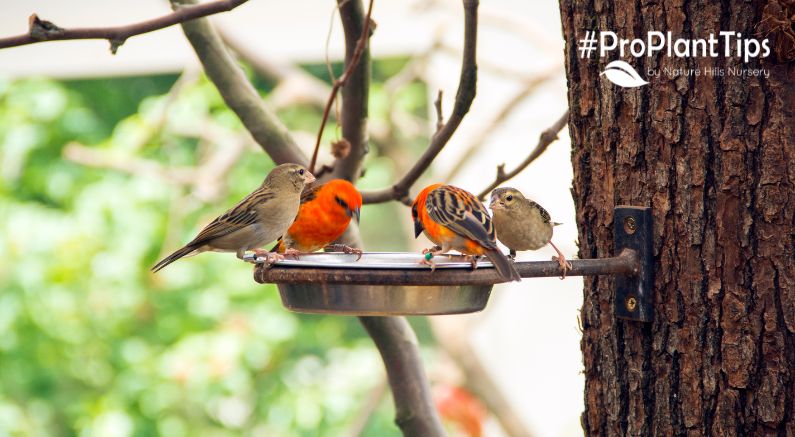There are a few things you should know about keeping your bird feeding stations healthy for your visitors.
Summertime rains can get your seed in the bird feeders wet causing clumping and mold or sprouting to occur. Regular feeding creates some debris to build up on the trays that have drainage holes (see below) to allow the rain or irrigation water to quickly drain away keeping the seed drier. Scrape away this built up debris before you clean the feeders.

The next time you go to fill you feeders, shake them a bit to see if the seed can move freely within the feeder. Maybe it is time to empty your feeder completely.
Take a bucket and put a 10% non-chlorine bleach solution in a bucket and scrub your feeders with the solution. Rinse them well. Then allow the feeders to dry in the sunshine before refilling them.
Raking up around the base of your feeders the hulls and spilled seed is a good idea too.
Some birds like Cedar Waxwings, Robins and Bluebirds will love it if you offer them raisins or berries. Orioles appreciate having a fresh orange slice available too.
Fresh water is crucial for keeping your feathered friends healthy and happy. You can use the same bleach solution for cleaning out the birdbaths using a scrub brush, and again rinse with clean water before refilling with fresh water. Keep those birdbaths clean and full and the birds will appreciate you.
Don’t forget about the hummingbirds too. Warm temperatures can cause your homemade hummingbird nectar to turn cloudy and spoil. Be sure to make a fresh batch often and it can be stored in your fridge. 1 part sugar to 4 parts water, and bring to boil and cool. Clean out the feeder with soapy water, rinse and refill to keep your hummers happy too.

